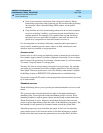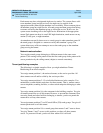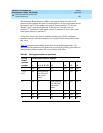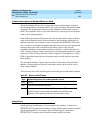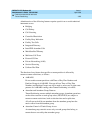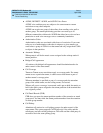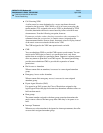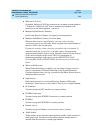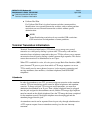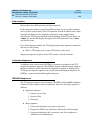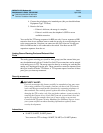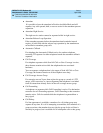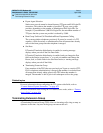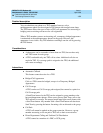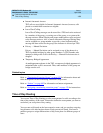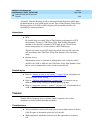
DEFINITY ECS Release 8.2
Administrator’s Guide
555-233-506
Issue 1
April 2000
Features and technical reference
1547Terminal Translation Initialization
20
■ Uniform Dial Plan
If a Uniform Dial Plan is in place between switches, tenant partition
identification is not passed between the switches, and so tenant-partition
restrictions are not enforced between the switches without special
administration.
NOTE:
Tenant Partitioning restrictions do not override COR restrictions.
COR restrictions are independent of tenant partitions.
Terminal Translation Initialization
Terminal Translation Initialization (TTI) allows you to merge an x-ported
extension to a valid port by dialing a system-wide TTI security code and the
extension from a telephone connected to that port. TTI also allows you to separate
an extension from its port by dialing a similar separate digit sequence. This action
causes the extension to be administered as an X port.
When TTI is enabled for voice, all voice ports (except Basic Rate Interface (BRI)
ports) become TTI ports or ports from which a TTI merge sequence can occur.
TTI is usually used to move phones, however, it also supports connecting and
moving attendants, data modules, voice/data telephones, and ISDN-BRI
telephones.
Attendants
In order for attendants to use TTI, you must assign an extension to the attendant
console. TTI port translations are the same for digital telephones and attendant
consoles. To merge a digital TTI voice port and an attendant, you must first
administer the attendant as an X port. Then a digital telephone must be plugged
into the jack assigned to the attendant console, and the TTI merge digit sequence
must be entered on the digital telephone. Once the TTI merge has been completed
for the attendant console, the digital telephone must be unplugged and the
attendant plugged into the jack.
An attendant console can be separated from its port only through administration.
A TTI separate request from an attendant console gives the user intercept
treatment.



